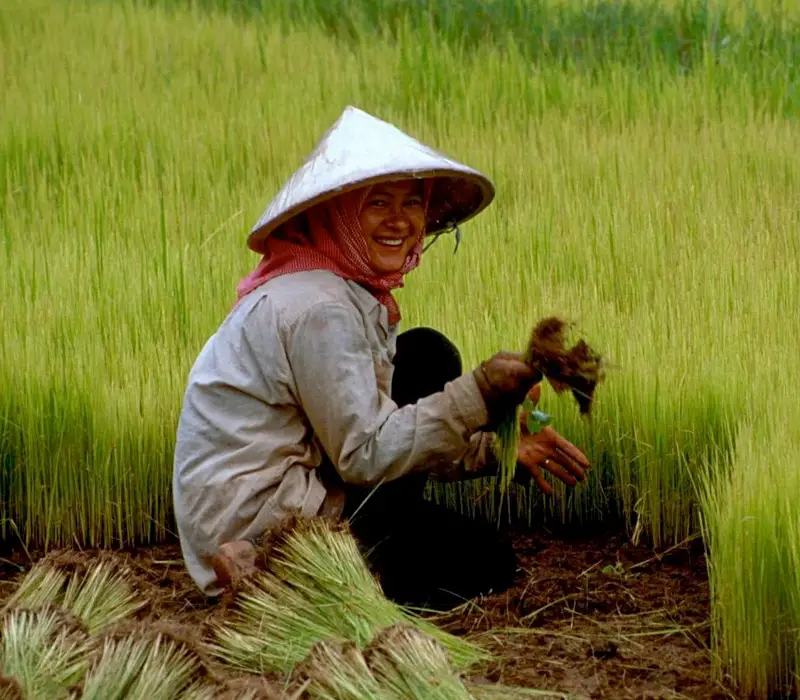Men's Hats, Women's Hats
Conical Asian Hat
Traditional Asian hat
The Conical Asian Hat also known as the Sedge Hat, Rice Hat, Paddy Hat or Coolie Hat is a simple style of conical hat originating in East and Southeast Asia, particularly Indonesia, Vietnam, China, Japan and Korea.
It is kept on the head by a cloth chin strap often made of silk and an internal band of the same material to keep the hat itself from resting on the wearer’s head. This style of hat is used primarily as protection from the sun and rain. When made of straw or matting, it can be dipped in water and worn as an impromptu evaporative-cooling device.
Because of its distinctive shape, it is often used in the depiction of East Asians. In mainland China and Taiwan, it is called dǒu lì. In Japan, the hat is called sugegasa. In Korea, it is called sasgas, mostly worn by Buddhist monks; in Vietnam, the name is Nón lá (leaf hat).
The conical hat varieties in Vietnam are notable for their romantic and timelessly crafted adornments. Special conical hats in Vietnam contain colourful hand-stitch depictions or words while the Huế varieties are famous for their ‘poem conical hats’. These contain random poetic verses and Hán tự which can be revealed when the hat is directed above one’s head in the sunlight.
Other names for the Conical Asian Hat
- Sedge Hat
- Rice Hat
- Paddy Hat
- Coolie Hat
Famous wearers of Conical Asian Hats
- Rice farmers

